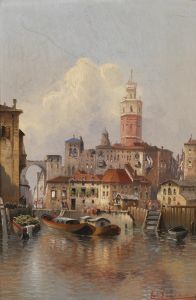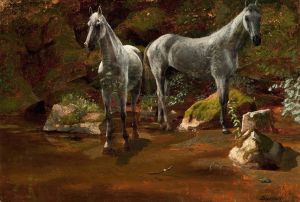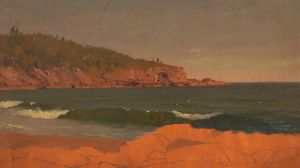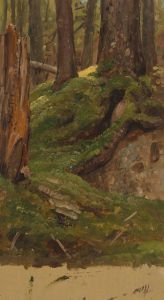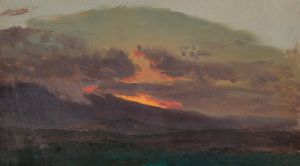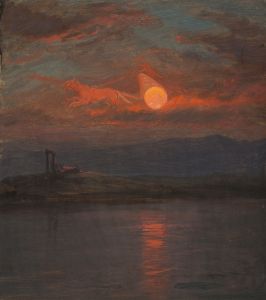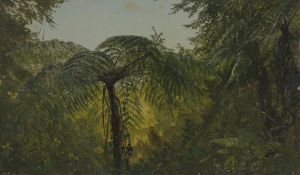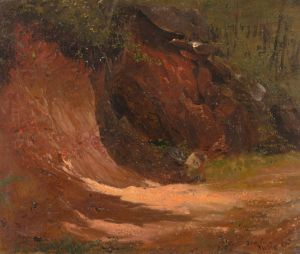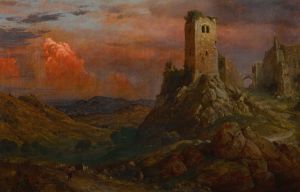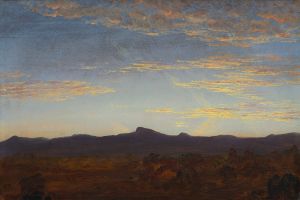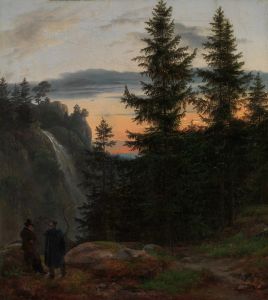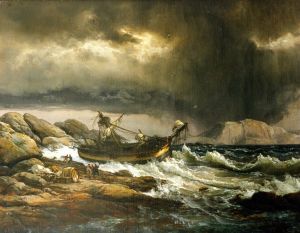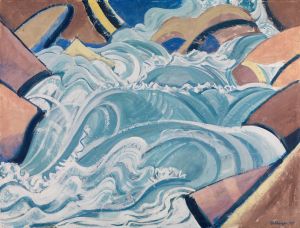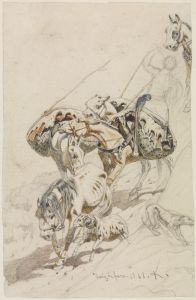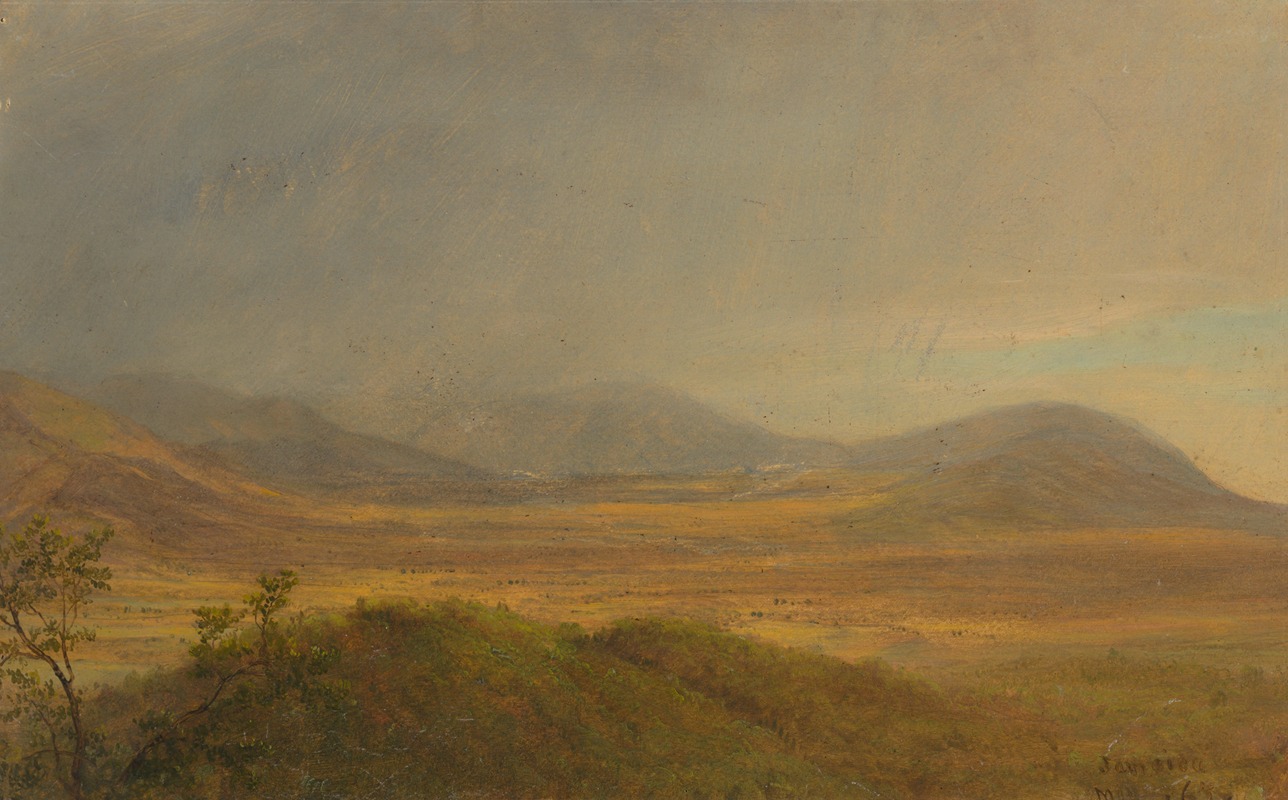
Mountainous Landscape IV
A hand-painted replica of Frederic Edwin Church’s masterpiece Mountainous Landscape IV, meticulously crafted by professional artists to capture the true essence of the original. Each piece is created with museum-quality canvas and rare mineral pigments, carefully painted by experienced artists with delicate brushstrokes and rich, layered colors to perfectly recreate the texture of the original artwork. Unlike machine-printed reproductions, this hand-painted version brings the painting to life, infused with the artist’s emotions and skill in every stroke. Whether for personal collection or home decoration, it instantly elevates the artistic atmosphere of any space.
Frederic Edwin Church, a prominent figure in the Hudson River School of American landscape painting, is renowned for his grand and detailed depictions of natural scenes. "Mountainous Landscape IV" is one of his works that exemplifies his mastery in capturing the sublime beauty of nature. Although specific details about this particular painting are limited, Church's broader body of work provides context for understanding its significance.
Born in 1826 in Hartford, Connecticut, Church was a student of Thomas Cole, the founder of the Hudson River School. This movement was characterized by its romantic portrayal of the American landscape, emphasizing the beauty and grandeur of the natural world. Church, like his mentor, sought to convey the divine in nature, often through dramatic compositions and meticulous attention to detail.
"Mountainous Landscape IV" likely reflects Church's fascination with the majesty of mountainous terrains, a recurring theme in his oeuvre. His travels to South America, the Arctic, and the Middle East influenced his work, providing him with a diverse array of landscapes to draw inspiration from. Church's paintings are known for their vivid colors, intricate details, and the ability to evoke a sense of awe and wonder in the viewer.
Church's technique involved extensive preparatory sketches and studies, which he would later transform into large-scale oil paintings. This method allowed him to capture the essence of a scene with remarkable precision and depth. His use of light and shadow, combined with a keen eye for atmospheric effects, created compositions that were both realistic and idealized.
The Hudson River School, active during the mid-19th century, was instrumental in shaping American art and identity. It celebrated the unique landscapes of the United States at a time when the country was expanding westward. Church's work, including "Mountainous Landscape IV," contributed to this narrative by highlighting the untouched beauty of the American wilderness.
While specific information about "Mountainous Landscape IV" is scarce, it can be appreciated within the broader context of Church's artistic legacy. His paintings not only captured the physical beauty of the landscapes he depicted but also conveyed a deeper philosophical and spiritual message. Church's work invites viewers to reflect on the relationship between humanity and nature, encouraging a sense of stewardship and reverence for the natural world.
Frederic Edwin Church remains a celebrated figure in American art history, and his landscapes continue to inspire and captivate audiences. Through works like "Mountainous Landscape IV," Church's vision of the sublime in nature endures, offering a window into the 19th-century American experience and the timeless beauty of the natural world.





